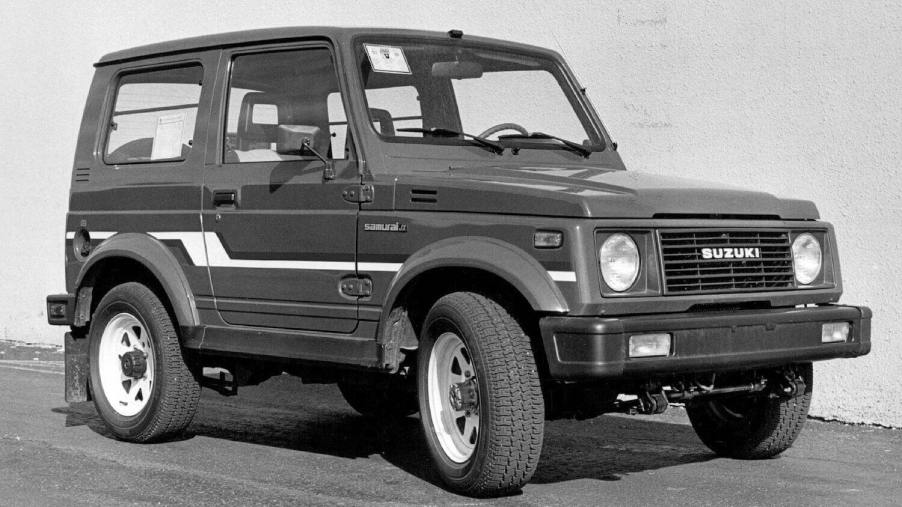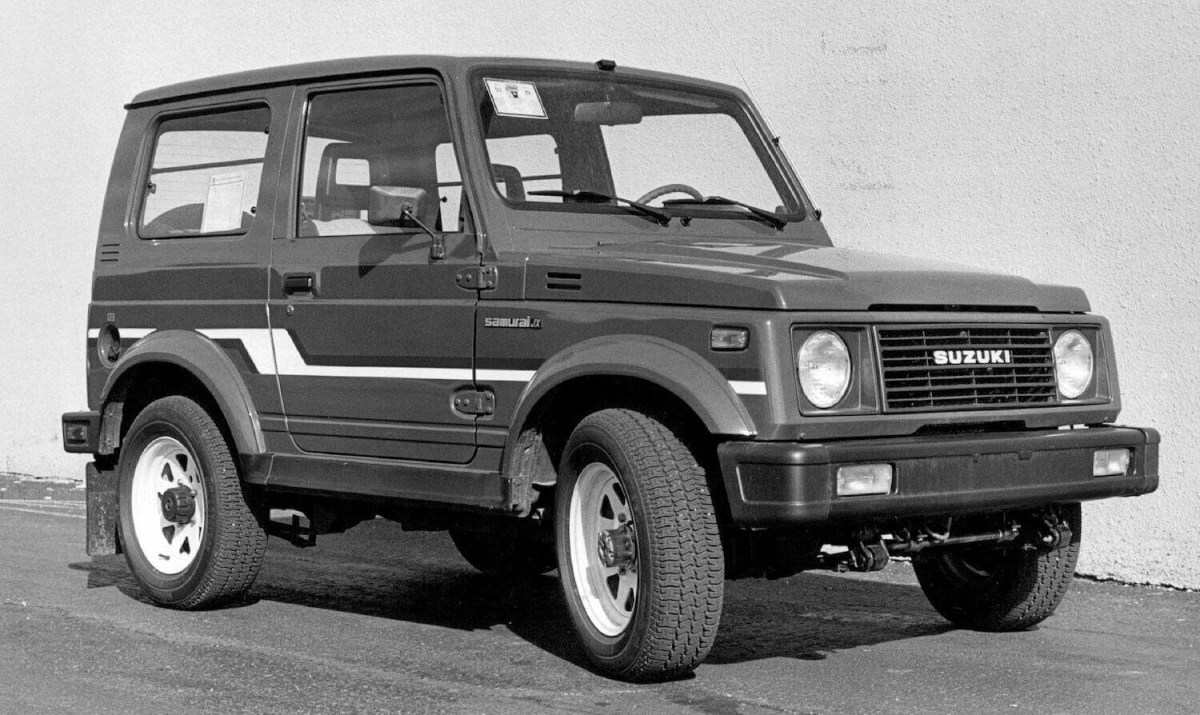
How Is the Suzuki Samurai Different From the Suzuki Jimny?
The Suzuki Samurai was a solid hit in the 1980s, helping it gain a larger foothold in the U.S. It offered rugged good looks and a plucky attitude to go with its utilitarian nature. Before long, it appeared everywhere, from farms and trails to urban garages and from shopping malls to high school parking lots.
But even before it was everywhere in the U.S., it had already been everywhere else in the world in the form of the Suzuki Jimny, which was the same vehicle as the Samurai but different. How different? That’s what we’re about to find out.
A brief history of the Suzuki Jimny and Samurai

The Suzuki Samurai has its roots as a small kei-class vehicle named the ON360, made by Japan’s Hope Motor Company. Introduced in 1968, the diminutive 4×4 was powered by a 359cc Mitsubishi engine and looked like a scaled-down Willys Jeep. In 1970, Suzuki bought the Hope Motor Company and renamed it the LJ10 for “Light Jeep,” known as the Jimny.
The Jimny underwent several iterations in its first generation, including a soft top, hardtop, and even a small truck. A second generation debuted in 1981, featuring larger 550cc and 660cc engines; it was longer and wider. Suzuki began to export this version of the Jimny, which went by several names, including the Suzuki SJ410/413, Samurai, Sierra, Chevrolet Samurai, Holden Drover, and Maruti Gypsy.
In 1985, Suzuki introduced the Jimny to the U.S. market as the Samurai. This version of the Jimny had a revised grille, headlights, and taillights. The interior had upholstered door panels and could be equipped with air-conditioning and a stereo. But the big change was the 1.3-liter four-cylinder engine.
Producing 63 hp, the four-cylinder was hardly speedy, with a 0 to 60 mph time of 16.9 seconds, according to MotorTrend. The performance was adequate around town. Off-road, the Samurai proved to be a mountain goat with locking hubs and a low-range transfer case and quickly won a following.
The Suzuki Samurai was on top of the world until it rolled over
Starting with a base price of $6,550 and a clever marketing strategy, the Suzuki Samurai was an immediate hit. Sales topped 87,000 in 1986, the first full year it was imported, and by 1988 Suzuki was selling 8,000 Samurais a month. Buyers across all demographics were drawn to the little 4×4, which looked like a scaled-down Jeep, and before long, they were everywhere.
An updated 1988 ½ model saw minor changes, including a revised suspension for a more comfortable ride and a shorter fifth gear for better highway performance. Thanks to a magazine article, the Samurai’s popularity seemed to increase with these changes until the wheels came off.
Consumer Reports, a popular magazine published by Consumers Union, tested the Suzuki Samurai in 1988 and promptly rolled the vehicle during normal driving. Several tests followed, including lane change and crash avoidance maneuvers, which demonstrated the vehicle was unstable at speeds above 40 mph. Consumer Reports gave the Samurai an “unacceptable” rating noting that it was easy to roll over.
That report and a rising yen killed sales of the Samurai in the U.S. It became the butt of jokes, and Suzuki could barely give them away with cash rebates. In 1989, Suzuki launched the Sidekick, a new, more comfortable SUV meant to complement the Samurai. Instead, the Sidekick replaced the Samurai, quietly phased out of the U.S. market.
The Suzuki Jimny lives on in other parts of the world
By 1995 the Samurai was dead in the U.S. Suzuki concentrated on the Sidekick and a lineup of small cars. Even so, the Jimny, which the Samurai was based on, continues to soldier on in other parts of the world. Suzuki introduced a third-generation Jimny in 1998, followed by the most recent fourth-generation one in 2018. Today it remains a popular vehicle for people who like offroading or who are just looking for a capable, inexpensive small SUV.



